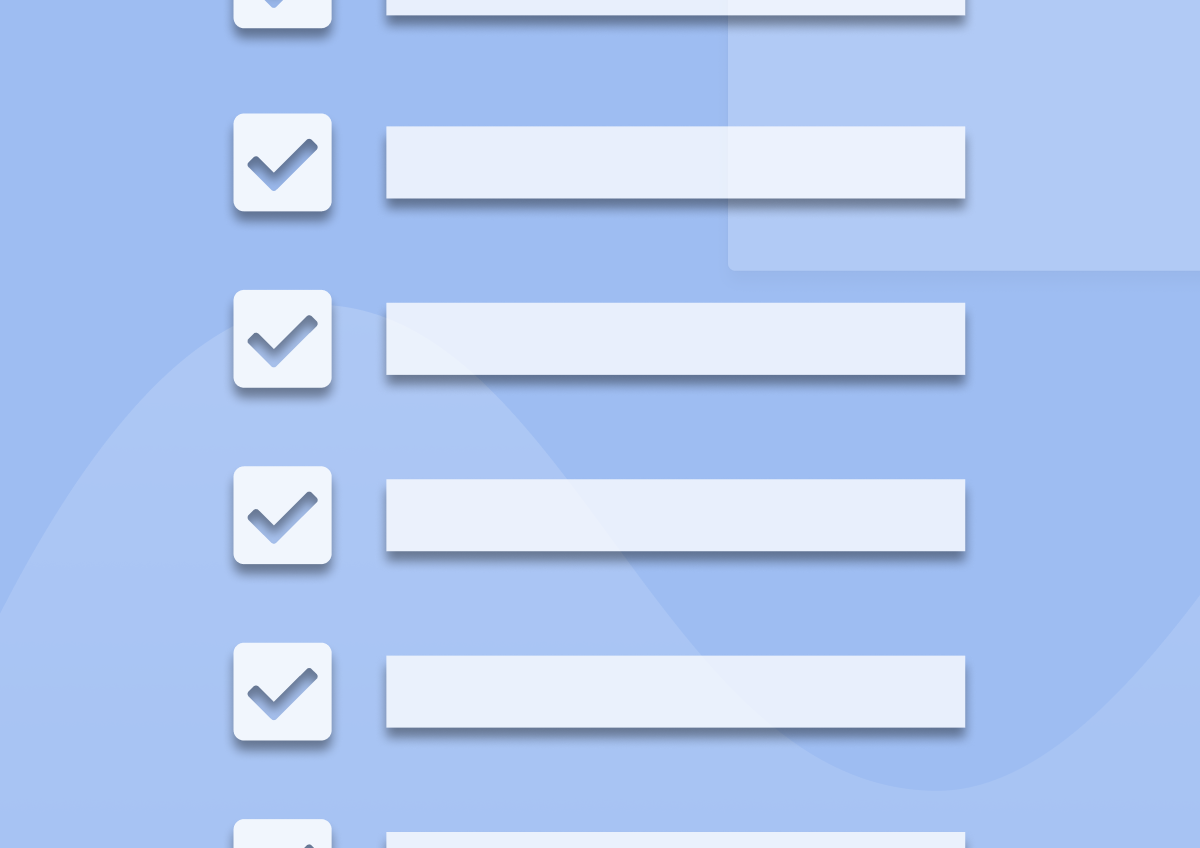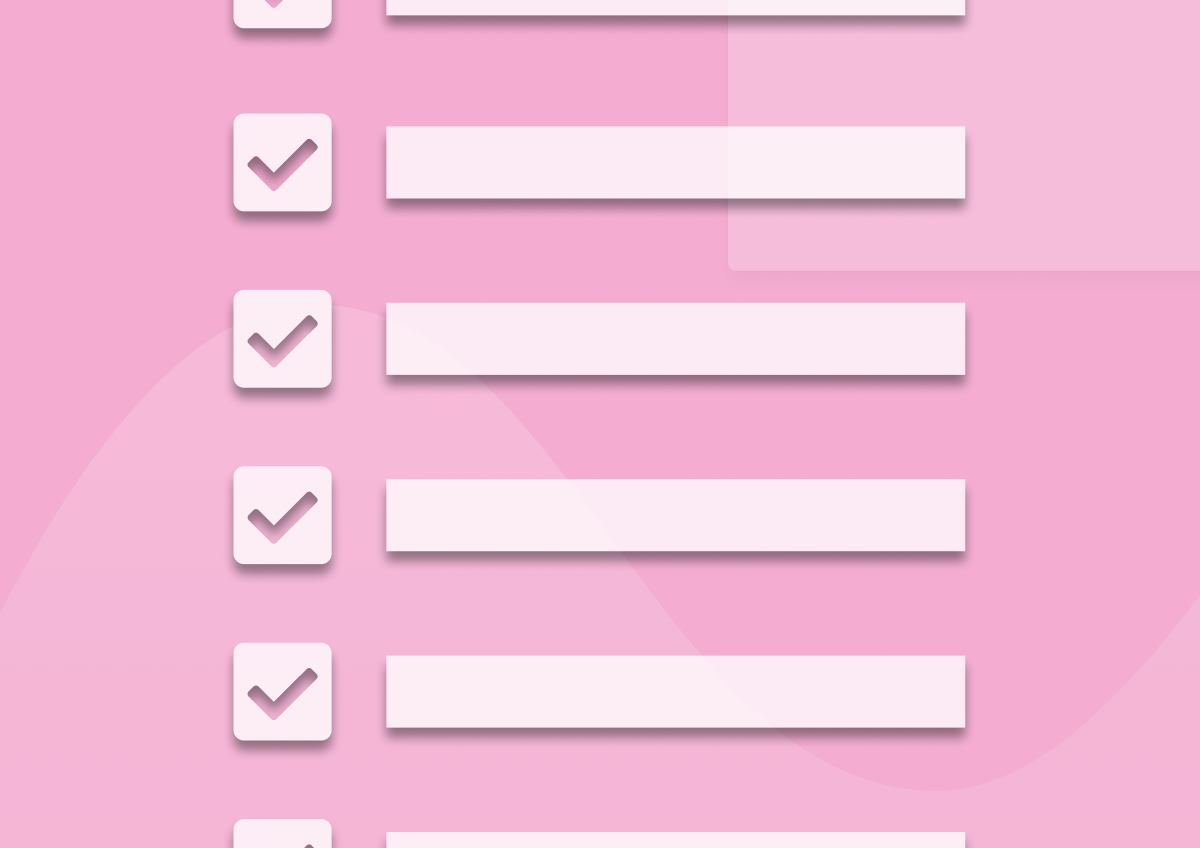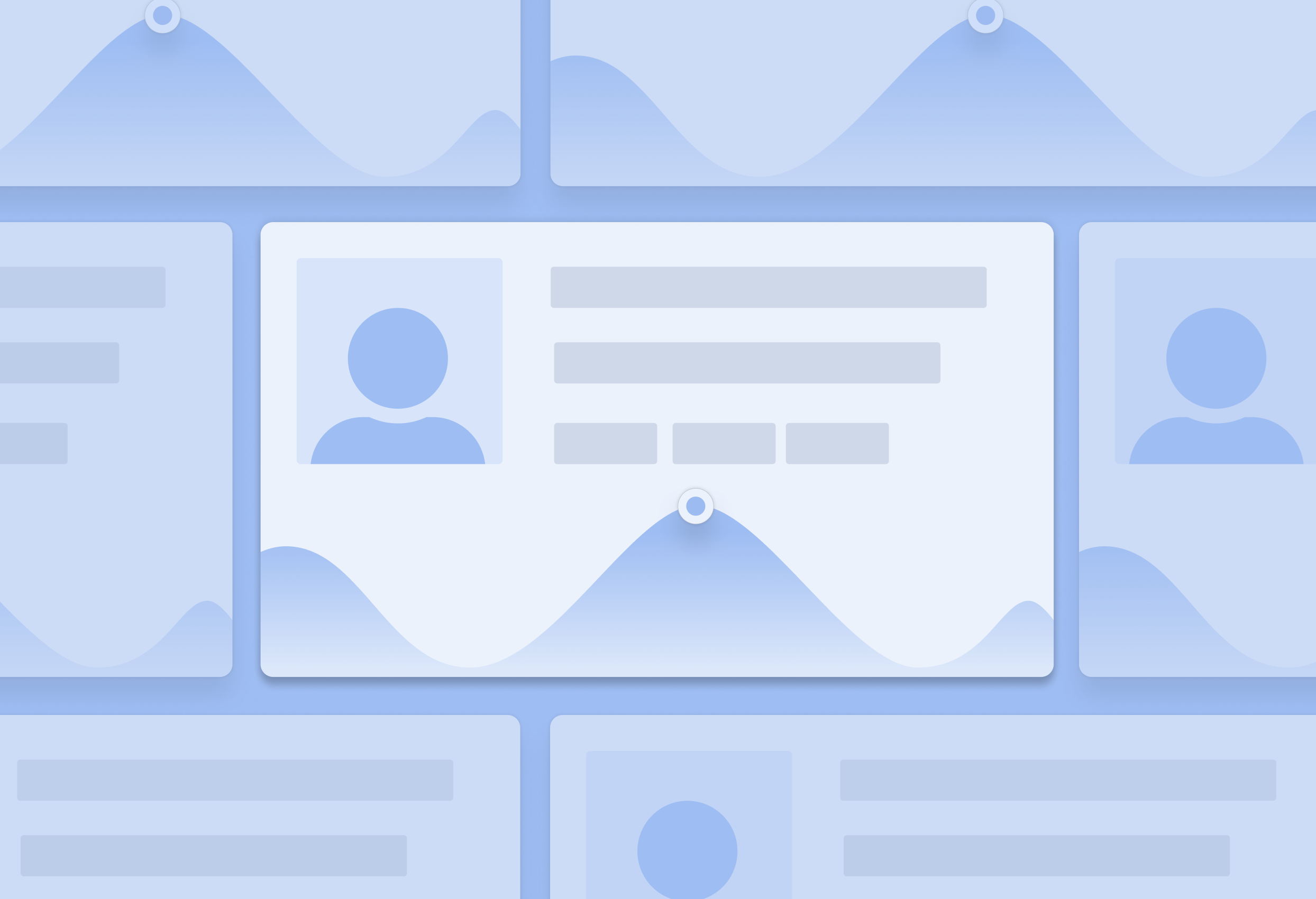SaaS Lead Scoring: The Ultimate Guide for SaaS Inbound Sales Teams
Amazing, isn’t it?
Your marketing efforts have started bearing fruits. The team has been working on it for so long, and their hard work paid off. Now you’re getting scores of new signups and inbound leads each day.
Yet your sales guys hate it. You hear them cursing the situation and wishing it would stop. Why?
Well, it’s because they know two things you don’t.
The first one is the quality of leads. Most sales people know that not all leads are equal and great opportunities hide somewhere in the pool of marketing generated leads – Trial signups, lead magnet downloads or demo requests.
The other thing is that unless they find a way to separate the wheat from the chaff, they’ll have to reach out to all those people. All the while, knowing that only a few of them are truly worth their time.
You can overcome it, of course. But to do that, you must introduce lead scoring to your sales stack.
Luckily, that’s also exactly what you’ll learn about from this guide.
You’ll discover what is lead scoring and why your SaaS inbound sales team needs it, badly. I’ll also show you how lead scoring works and give you some pointers for qualifying leads. You’ll even discover what mistakes you must avoid when identifying the biggest opportunities among all inbound leads.
So, keep on reading to discover how to score leads for your SaaS or jump to the section that interests you the most:
- What is lead scoring?
- Why score leads in the first place?
- How does the traditional lead scoring work?
- How to construct a lead scoring model for a SaaS company?
- What is predictive lead scoring and how it can help your SaaS sales team?
- How to integrate lead scores into your inbound sales process?
- How to act on your lead scores to drive sales and revenue.
- The most common lead scoring mistakes
What is Lead Scoring?
In its simplest form, lead scoring is a process of evaluating a new lead’s likelihood to buy or become a customer. Scoring leads involves assigning values to different lead characteristics and behaviors and use those to calculate a value we call the lead score.
(Don’t worry if all this information feels too overwhelming. I’ll explain it all, and the role lead scoring plays in a sales process in great detail in just a second.)
The ultimate goal of lead scoring is to:
- Help sales and marketing teams prioritize leads better, and
- Make it easy for salespeople to identify the biggest opportunities, so they don’t waste time on poor quality leads.
Why all this matter? Well, because, as I’ve alluded to in this guide’s introduction, both teams – sales and marketing – have a problem. The better work the marketing team does, the greater strain sales teams experience to process and follow up with those leads. And the greater that pressure on sales, the more frustration they feel towards marketing.
It’s a vicious cycle, really.
What’s more, if feels like it has to be like that. To generate leads, marketers have to broaden their target. They must use strategies that attract large quantities of visitors and try to convert as many of them into leads.
Sales reps, on the other hand, don’t want to focus on anything but the hottest opportunities only. Unfortunately, many marketing leads suck and it’s down to the salespeople to figure them out.
It’s no surprise that, according to HubSpot, 59% of marketers say they provide salespeople with their best quality leads, while salespeople rank marketing-sourced leads last.
Jamie Shanks, the author of “Spear Selling” refers to the problem as blindspots – Missed data points that provide inside sales people with a better understanding of each opportunity the marketing delivers.

Having to deal with poor quality leads is the common reality for sales teams.
Not all inbound leads are ready to talk shop, after all. Even in the traditional B2B businesses, many people signing up for a company’s marketing collateral might have been just browsing around. They were researching more information about the problem but not shopping for a solution.
The problem is even greater in SaaS. Many leads are simply freemium or free trial users. Given hardly any barriers to sign up today, many people sign up for SaaS products out of sheer curiosity.
(I know I’ve done it on occasion, too.)
Marketing cannot distinguish them in any way, of course. Their role is to bring as many new leads. Some of them might love the product and will stick around using it, after all, and so, marketers shouldn’t be holding themselves back.
But unless salespeople have a way to tell them apart, they face two choices:
- They find some indicators of the lead’s potential, and process only those people they consider offering an opportunity for a sale. Unfortunately, doing so means either going through a lengthy process of scouting LinkedIn and other sources to learn more about a lead or using the gut feeling. I’m sure you’ll agree, neither of the options seems effective in the long run.
- Reach out to every cold lead without exceptions. The problem? Doing so is going to exhaust their resources pretty quickly, leading to nothing but frustration.
The good news? Lead scoring helps eliminate those problems entirely and discover product qualified leads with ease.
Before we discuss how the process works in practice, though, we should uncover all the benefits of developing a lead scoring model for your SaaS.
Why SaaS Brands Must Score Their Leads – The Benefits of Lead Scoring for SaaS Companies
There are three main benefits of lead scoring.
One, lead scoring helps uncover freemium or trial users who are the most likely to convert to paying customers. Because let’s face it, not all of your leads will generate the bulk of your revenue.
Segment, for example, established that 16% of their signups were responsible for a staggering 86% of the revenue (source.)
Two, evaluating leads’ characteristic helps establish for which plan they are the most likely to sign up. By analyzing various data – team size, account size, and usage and others – your sales team can estimate which price plan would suit a company the most.
Three, the lead score will also reveal when a lead is ready to start discussing their upgrade.
In short, with lead scoring your sales team knows exactly:
- Who their biggest opportunities are,
- What is the size of the sale opportunity, and
- How to prioritize them to maximize the team’s time and efforts.
But that’s not all.
What Companies Use Lead Scoring For?
Your inside sales team can use lead scores to improve their work in two other ways:
One, by testing assumptions about the target audience. Salespeople can create different customer profiles, identify people matching them quickly, and research how right they are assuming those people present a strong business opportunity.
Two, by standardizing customer profiles for both, marketers and the sales team. As you’ll see soon, to score leads, you need to define ideal client characteristics. Having them helps overcome the blindspots we’ve talked about earlier.
A win-win scenario for everyone, I’m sure you’ll agree.
How Does Traditional Lead Scoring Work and How to Do Lead Scoring in SaaS?
We’ve covered many aspects of lead scoring already. You know what it is, and what benefits scoring leads offers for SaaS brands.
But what about the lead scoring process? What does that entail?
Let’s take a look.
How Does the Traditional Lead Scoring Work?
In principle, lead scoring involves assigning a value to various data points about a lead and using a lead scoring model to determine a fit.
Traditional lead scoring process, in short, focuses on a.) what business knows about a lead, and b.) their behavior when researching or interacting with a business. All to determine whether the person or a company are a good fit and worth investing time and effort into.
B2B businesses use various characteristics, like a person’s location or their company size, along with information such as how often a person has visited the company’s website, whether they’ve downloaded a lead magnet or sent an email to determine fit.
Most of the time, such data is found in the company’s CRM system. For example, here’s a lead profile with their score. Note that the majority of information collected by the system focuses on the person or their business.

SaaS Lead Scoring differs from the above process slightly.
First of all, you typically work with four types of customer characteristics:
#1. Explicit data
This information includes anything that a lead has shared with you when signing up for a demo or a trial. Common examples of explicit data include the person’s name, their email address, their company name (which you can also deduct from their email address,) and so on.
SaaS companies collect different explicit data, so your dataset here might vary.
Enjoy, for example, asks for the company name and the business email.

Hotjar, on the other hand, asks for name and email only.

seoClarity’s request a demo page asks companies also to provide their phone and website URL.

So, the explicit data you get depends on the information you collect about a new lead during the signup process.
Luckily, even if you ask for the basic data, you can still expand it to learn more about the person signing up. For that, however, you need to look at the implicit data.
#2. Implicit data
This group includes information your company can uncover about the person or their business. One way to do that is by enriching lead profiles – Using explicit data to research more information about a person.
Platforms like Clearbit or FullContact use a person’s email, for example, to identify more information about their company, business size, the industry, the number of employees, the person’s social media accounts, the company’s social media accounts, their location and so much more.

Similarly, implicit data includes information about the quality of the explicit information you’ve received. An email address is a good example. An address on a free domain (i.e., Gmail, Yahoo Mail, etc.) reveals little about the person or their company. As a result, it will carry less weight when scoring the opportunity. A business email address reveals a more serious intent to use the product and helps learn more about them.
#3. Behavioral data
Product engagement lies at the heart of SaaS lead scoring. How customers interact with the product can tell a lot about their likelihood of using it for longer. A freemium user who logged in twice in their first two weeks of use, most likely, will never convert into a paying customer. Seeing another person, using the product regularly, on the other hand, might indicate that they have reached the activation point in your app.
Typical user engagement metrics companies analyze for lead scoring include the number of sessions within a specific time frame, time per session, the number of active users on the domain (signaling group accounts.)

Example of a behavioral engagement setup
#4. Proprietary research
Finally, because of the nature of what you sell – software as a service product – you can collect insight from your leads directly. Such information can help you verify the implicit data or any assumptions you have made about a lead.
How to Score Leads – Constructing the Lead Scoring Model
To explain how to use the data above to score leads, we must discuss how companies build a traditional lead scoring model first.
In the traditional B2B lead scoring, a lead earns award points for each action they take in the funnel. Such actions could include visiting the website, downloading the lead magnet, returning to the site or sending an inquiry.
Similarly, leads earn points for characteristics that match the company’s ideal client profile. A person with a specific job title might earn more points than others. That happens often because their position makes them seem more likely to be the decision-maker, for example. Other demographic or firmographic characteristics that earn leads points include their location, company size or the industry it operates in.
Marketing data plays a role in the score too. Where did the person land on the website from, which page they started their journey through the site, and how they inquired with the business, would affect their score.
Some companies count what data they have about a lead in the model as well. They might consider leads with a business email more valuable than those who signed up with a free email address. They would add value to people whom they could reach on the phone or have the company’s physical address, for example.
So, a traditional B2B lead scoring model would look more or less like this:

SaaS Lead Scoring Models Aren’t Much Different
The principle of constructing a lead scoring model in SaaS is quite similar, actually.
You identify the key ideal user characteristics first. Then, you assign points values to them and use them to calculate the person’s or company’s score.
However, in SaaS, you can expand the model with user activity and proprietary information.
A SaaS customer fit model could look like this:

Combined, all these data points provide you with an accurate lead score, revealing how likely a person is to become a user.
However, sometimes, discovering a full customer fit in SaaS takes time.
It happens because, depending on the type of your SaaS product, customers might have to use it for a while to determine its value to them.
Dropbox or Slack deliver their value right away. The moment you sign up and upload your files to the Dropbox folder, you see the value the product delivers. Install Slack in your organization, and everyone starts to chat. So, you know that the product works.
Unfortunately, the same cannot be said for HubSpot, MailChimp, Pipedrive, SEMrush and many other SaaS products. You have to use them, and keep doing it for some time to discover their benefits.
So, in spite of meeting any other criteria, their typical lead mightn’t offer a business opportunity until they’ve realized that value.
For that reason, lead scoring platforms usually score customer fit models and product adoption separately. In doing so, they highlight not only the hottest leads but also signal which opportunities are worth monitoring further.

Problems with the Traditional Lead Scoring
Although extremely useful, the lead scoring process can cause some problems for sales teams.
- It’s a tedious and time-consuming process, particularly, if done manually. Researching every lead, scouting LinkedIn or other platforms to collect all the implicit data and run it all by the lead scoring model requires time and effort, blocking the sales team from actually connecting with the best opportunities.
- Lead scoring often ignores the market and other variables. It happens because of the sheer amount of data required to process such information, mostly.
- Finally, lead scores are often set up on an individual level, with the leadership assigning a score to each CRM record (often calculated automatically.) Salespeople don’t trust it, and so, they chose to ignore it.
Add to that the limited access to much of the information, and mistakes and assumptions salespeople make when collecting it, and you end up with an insufficient system that doesn’t deliver the desired results every time.
Predictive Lead Scoring
Predictive-scoring uses machine learning to analyze the available data, enrich it with additional information and identify the best leads automatically.
What’s more, predictive lead scoring goes beyond the information about a lead. It can analyze previous customers, identify their commonalities and use that insight when evaluating new sales opportunities.
Predictive lead scoring platforms collect all the necessary information, match it with historic data to deliver the most accurate lead score possible based on your desired customer fit profiles.
In short:
- Predictive lead scoring looks at your most successful deals so far and identifies their commonalities.
- It also mines the web for more information about each new lead it receives.
- Finally, such a platform uses the above information to calculate lead scores and evaluate how these opportunities match the best customers to date.
How Predictive Lead Scoring Helps SaaS
To answer the question, let’s consider your situation. You get an insane amount of inbound leads, after all. Depending on your business model, these could be freemium signups, free trial signups, demos, newsletter signups and so much more.
It’d be almost impossible to process those opportunities by hand. Reaching out to them all, one by one, wouldn’t make any sense either.
A predictive lead scoring tool takes the burden off your shoulders. The scoring system analyzes all leads and suggests which ones are worth your time.
Where Predictive Lead Scoring Falls Short, Unfortunately
There is one problem with the predictive lead scoring model – It evaluates leads based on the past and historical data only. This would have been fine if you’re business never moved forward. But no such business exists. You want to move forward, grow and develop.
Lead scoring understood in the traditional sense, empowers you to do it. By constantly refining the customer fit model, you can focus on the customers you want to sell to tomorrow, not the ones you’ve worked with yesterday.
How to Use Lead Scores in a SaaS Business
Let’s face it, it doesn’t matter how fast or effectively a lead scoring algorithm produces lead scores…
…all of this is worthless unless you act on that insight.
So, here are a couple of quick actions that will help you integrate lead scores into your inbound sales process to drive growth and revenue:
- Review new lead scores daily Push the best opportunities to the CRM, mark leads you’d like to collect more data on and cross out the rest.
- Attach lead score to your CRM records. Your sales team will be able to work out their best opportunities themselves, then.
- Monitor the success with those leads. Such insight will help you fine-tune and perfect your customer fit profiles, and uncover the absolutely greatest sales opportunities among inbound leads.
BONUS: Common lead scoring mistakes
For the end, let me share with you some common lead scoring mistakes I’ve seen companies making over and over again.
Needless to say, each of those can have a detrimental effect on your lead generation and sales process’ qualify.
So, without any further ado, here’s what you should avoid doing when scoring leads:
Mistake #1. Developing a single lead scoring model only.
Most SaaS brands target many customer groups at once. An event software company might want to connect with event planners, agencies but also, in-house event departments at large corporations.
These people have different characteristics, and different factors determine their likelihood to buy.
Having a one-size-fits-all model will only reduce your opportunity to uncover the best leads among them all.
Mistake #2. Using behavioral data only
I admit – How a person’s using a SaaS product reveals a lot about their likelihood to want to pay for using it further. For that reason, many companies make behavioral data their primary (or even only) indication of a hot lead.
There is a problem with this approach, though. Behavioral data paints only part of the picture. An important part, I agree, however, SaaS inside sales teams should evaluate more factors. Because, who a person is, their role within the company, location, and countless other characteristics also affect the customer fit.
A user might not be responsible for buying such a product within an organization, after all. They might not even be working in a job that requires using it, and have signed up because of personal interest. Perhaps they want to move to that department, eventually. Or are seeking a new role elsewhere and are preparing themselves for the task by reviewing the most common tools used there.
Behavioral data will not disclose such information. But you can uncover it by analyzing all data about a lead – their demographics, firmographics and product adoption.
For that reason, behavioral data should form a part of your lead scoring model only.
Hint: There are multiple ways to obtain demographic & firmographic data on your users. For example, you can use enrichment APIs or ask additional questions during sign-up. At Refiner, we believe that embeddable popup surveys get you the most accurate data with unbeatable response rates.
Mistake #3. Not acting on lead scoring results right away
It goes without saying; a lead score is worth nothing unless you act on it. Lead scoring tools score new leads daily. But if you prolong reaching out to those people, you might lose the opportunity anyway.
That’s why most lead scoring solutions include powerful integrations and notifications, allowing you to push the best leads to the CRM and notify your team about them instantly, and do it even from the comfort of your smartphone.
All so that you don’t miss out on a new opportunity. Ever.
Key Takeaways
- Lead scoring helps prioritize inbound leads and uncover the biggest opportunities to focus on right now.
- When scoring leads, you assign point values (both positive and negative) to different lead data and use them to calculate the lead score.
- In SaaS, you work with four types of lead data:
- Explicit,
- Implicit
- Behavioral, and
- Proprietary
- Lead scoring in SaaS works best when a company creates multiple lead scoring models to target different user groups and their characteristics.
- Iteration is important. Lead scores evolve with your business and you should refine your lead scoring model continuously to target the people you want to sell to tomorrow.









